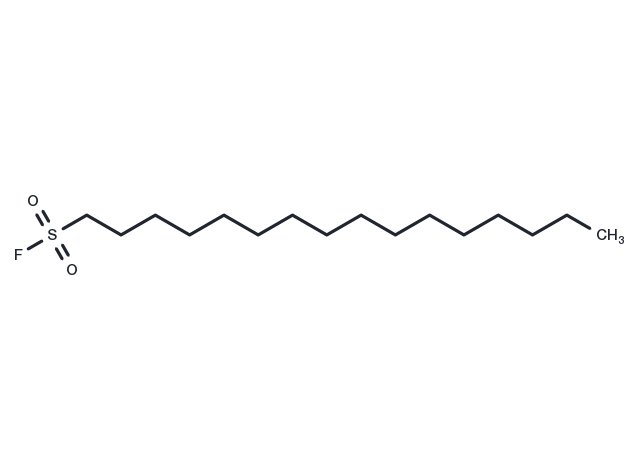Powder: -20°C for 3 years | In solvent: -80°C for 1 year


AM 374 (HDSF), a fatty acid amide hydrolase (FAAH) inhibitor, demonstrates the capacity to inhibit amidase activity, boasting an IC50 value of 13 nM. This compound is potentially applicable in neurological disease research.

| Pack Size | Availability | Price/USD | Quantity |
|---|---|---|---|
| 5 mg | In stock | $ 39.00 | |
| 10 mg | In stock | $ 67.00 | |
| 25 mg | In stock | $ 138.00 | |
| 50 mg | In stock | $ 222.00 | |
| 100 mg | In stock | $ 328.00 | |
| 1 mL * 10 mM (in DMSO) | In stock | $ 43.00 |

| Description | AM 374 (HDSF), a fatty acid amide hydrolase (FAAH) inhibitor, demonstrates the capacity to inhibit amidase activity, boasting an IC50 value of 13 nM. This compound is potentially applicable in neurological disease research. |
| Targets&IC50 | Amidase:13 nM |
| In vitro | AM 374 (0-9 nM) inhibits the degradation of anandamide in N18TG2 cells.[1] |
| In vivo | AM 374 (20 μg ; intraventricular injection, once) has no effect on lever pressing in FR5, but when used in combination with anandamide (intraperitoneal injection), it reduces lever pressing.[2] |
| Synonyms | HDSF, Hexadecanesulfonyl fluoride |
| Molecular Weight | 308.5 |
| Formula | C16H33FO2S |
| CAS No. | 86855-26-7 |
Powder: -20°C for 3 years | In solvent: -80°C for 1 year
DMSO: 90.0 mg/mL (291.7 mM), Sonication is recommended.
You can also refer to dose conversion for different animals. More
bottom
Please see Inhibitor Handling Instructions for more frequently ask questions. Topics include: how to prepare stock solutions, how to store products, and cautions on cell-based assays & animal experiments, etc.
AM 374 86855-26-7 Metabolism Neuroscience FAAH AM374 HDSF Hexadecanesulfonyl Fluoride AM-374 Hexadecanesulfonyl fluoride inhibitor inhibit
